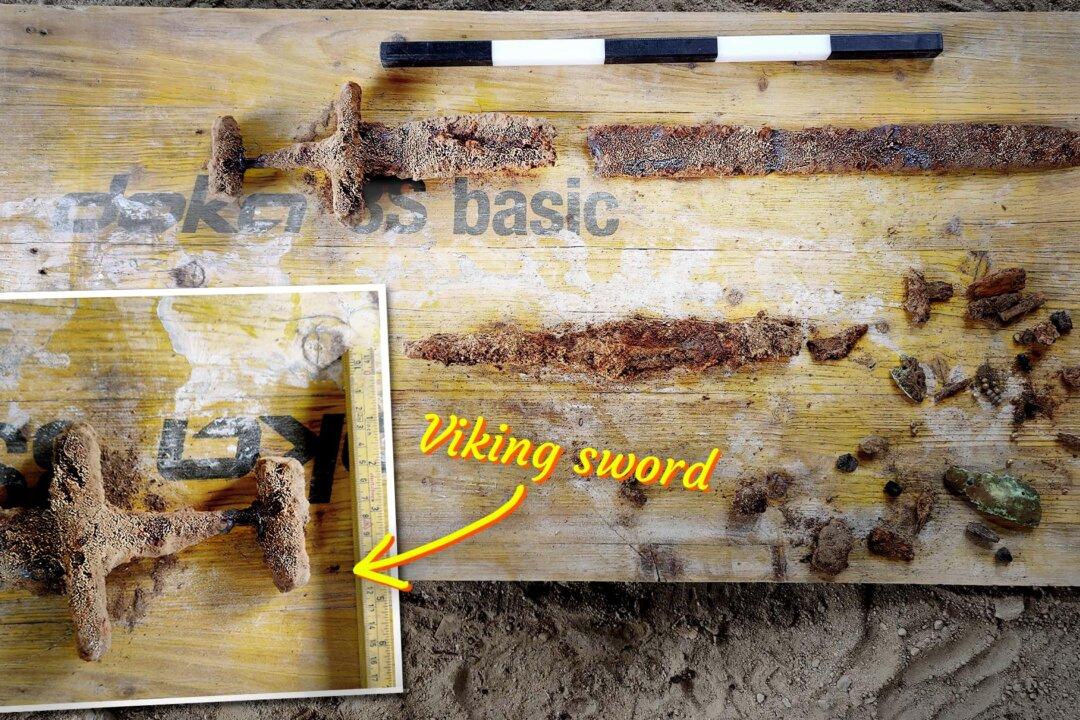A couple’s home summer project unexpectedly became an archeological dig when they unearthed a Viking-Age grave in their backyard—including a sword over 1,000 years old.
Norwegian homeowner Oddbjørn Holum Heiland broke ground with an excavator in late June, intending to open up the yard space, when he pulled up an oblong slab of stone from just below the surface.






